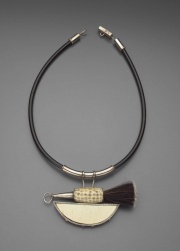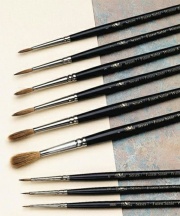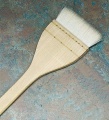Difference between revisions of "Brush"
| (One intermediate revision by one other user not shown) | |||
| Line 1: | Line 1: | ||
| − | [[File:2006.550-SC179215.jpg|thumb| | + | [[File:2006.550-SC179215.jpg|thumb|Bavarian brush<br>MFA# 2006.550]] |
== Description == | == Description == | ||
| Line 18: | Line 18: | ||
</gallery> | </gallery> | ||
| + | ==Resources and Citations== | ||
| − | + | * ''Encyclopedia Britannica'', http://www.britannica.com Comment: "brush." Accessed 18 Mar. 2005. | |
| − | |||
| − | * ''Encyclopedia Britannica'', http://www.britannica.com Comment: "brush." | ||
* ''The Dictionary of Art'', Grove's Dictionaries Inc., New York, 1996 | * ''The Dictionary of Art'', Grove's Dictionaries Inc., New York, 1996 | ||
Latest revision as of 14:27, 10 May 2022
Description
A tool composed of a handle holding natural or synthetic bristles. Brushes are used for cleaning, grooming, polishing, writing, or painting. Natural bristles are obtained from the back or shoulders of swine (hogs, pigs, or boars). They can be white, yellow, bronze, gray, or black. From the 16th century to 1917, Russia was the major exporter of brush bristles (usually white). China began exporting natural black bristles in 1889 to the U.S. and these quickly gained in popularity. Currently most natural hair bristles come from India. A flag, or split end, adds to the paint carrying ability of the bristle. Some plant fibers, such as piassava, are also used for brush bristles. Synthetic bristles are various stiff monofilament fibers such as nylon and Polyethylene.
Synonyms and Related Terms
brushes; brosse
Additional Images
Resources and Citations
- Encyclopedia Britannica, http://www.britannica.com Comment: "brush." Accessed 18 Mar. 2005.
- The Dictionary of Art, Grove's Dictionaries Inc., New York, 1996
- F. Kidd, Brushmaking Materials, Bristish Brush Manufacturers, London, 1957
- Zora Sweet Pinney, 'A Handle on the Terms used for Artists' Brushes', unpublished glossary, 1999




